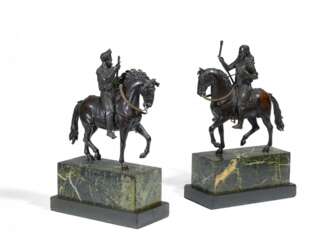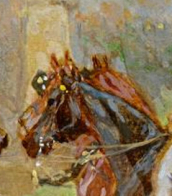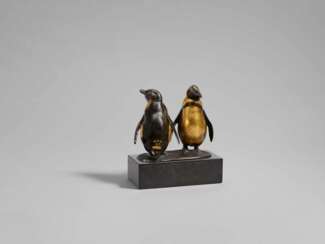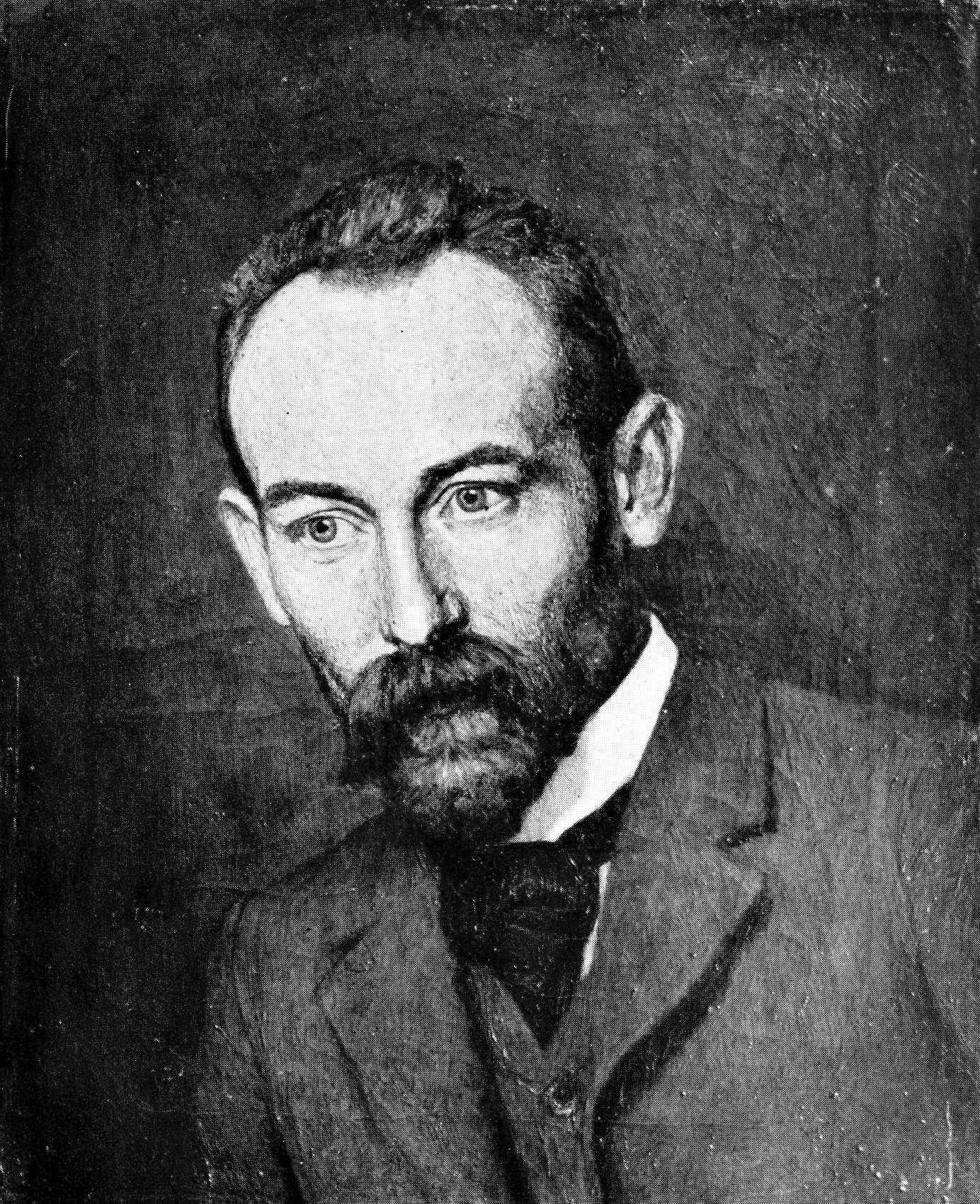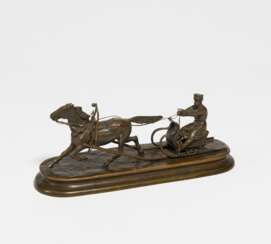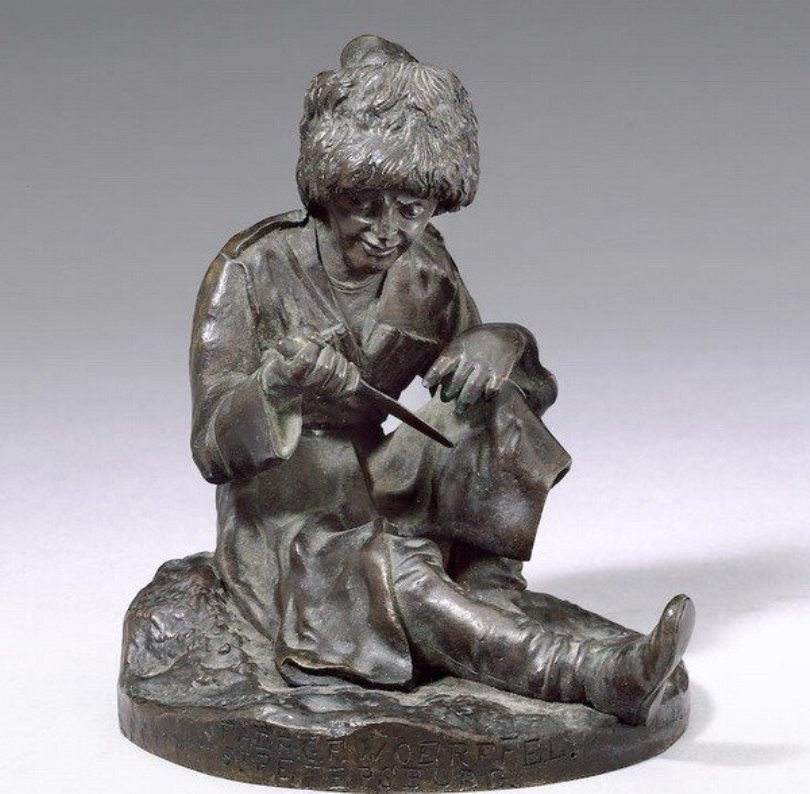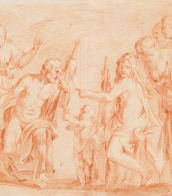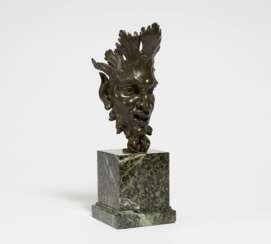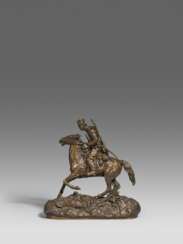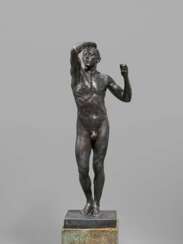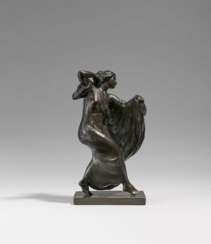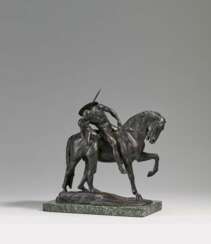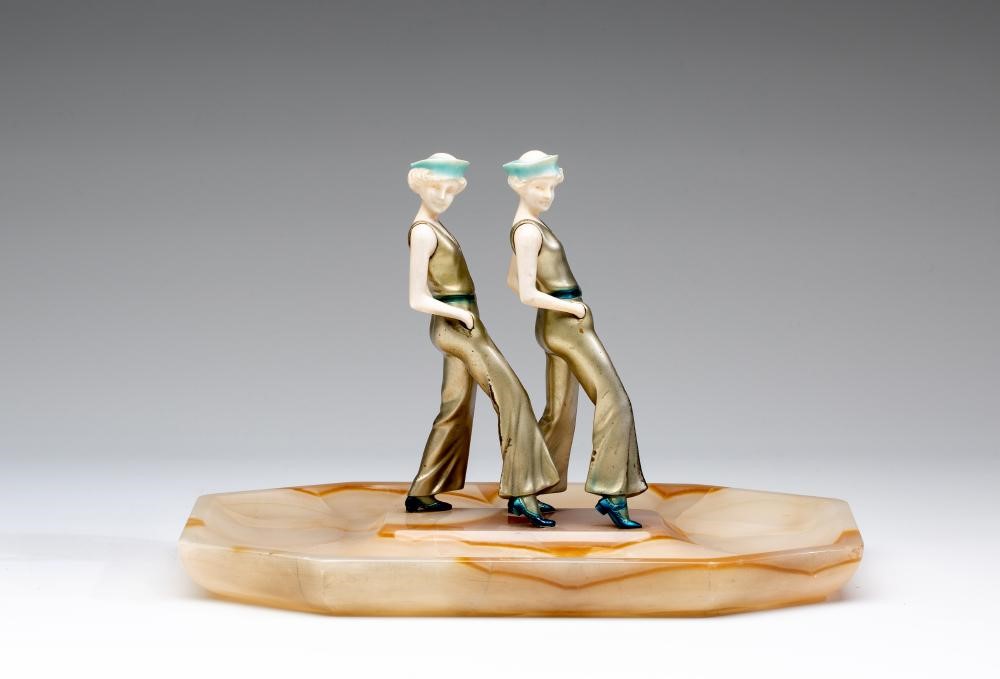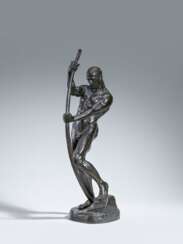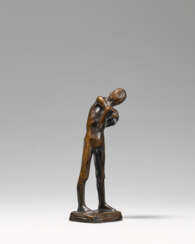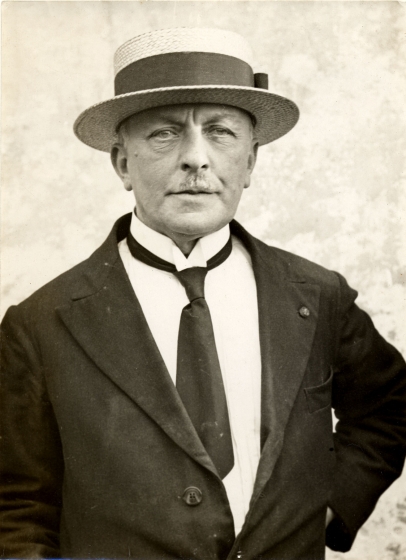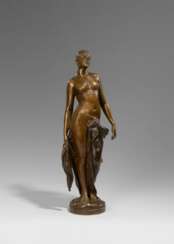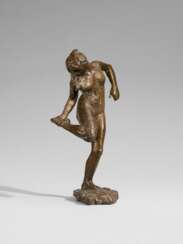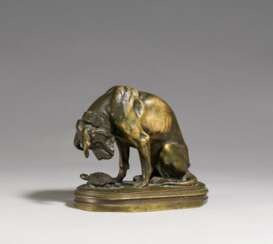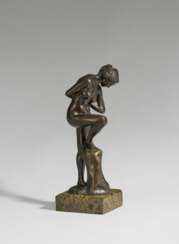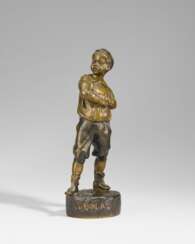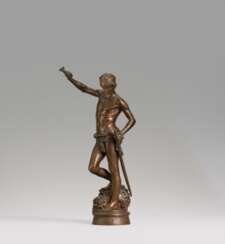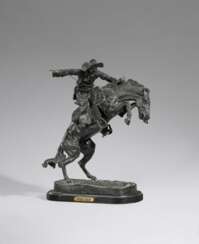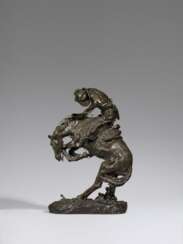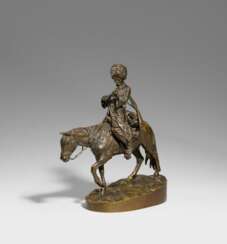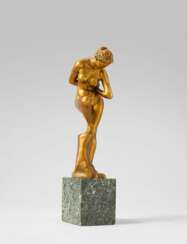bronzes figuratifs

François Auguste René Rodin was a French sculptor, generally considered the founder of modern sculpture. He was schooled traditionally and took a craftsman-like approach to his work. Rodin possessed a unique ability to model a complex, turbulent, and deeply pocketed surface in clay. He is known for such sculptures as The Thinker, Monument to Balzac, The Kiss, The Burghers of Calais, and The Gates of Hell.
Many of Rodin's most notable sculptures were criticized, as they clashed with predominant figurative sculpture traditions in which works were decorative, formulaic, or highly thematic. Rodin's most original work departed from traditional themes of mythology and allegory. He modeled the human body with naturalism, and his sculptures celebrate individual character and physicality. Although Rodin was sensitive to the controversy surrounding his work, he refused to change his style, and his continued output brought increasing favor from the government and the artistic community.


Edgar Degas, a French artist, was a master of painting, sculpture, and drawing, celebrated for his profound influence on the Impressionist movement despite his preference for being called a realist. Degas was born into a well-off family in Paris, France, and demonstrated a keen interest in art from an early age, eventually shaping his path to become one of the most sophisticated draftsmen of his time. His rigorous academic training and close study of classical art initially aimed him towards a career in history painting, but Degas soon pivoted towards contemporary subject matter, thus cementing his role as a classical painter of modern life.
Degas is renowned for his dynamic portrayals of movement, particularly in his depictions of dancers, racehorses, and everyday Parisian life. His works are characterized by their psychological depth and the isolation of his figures, showcasing his unique ability to capture the essence of his subjects with both empathy and critical distance. More than half of his oeuvre focuses on dancers, reflecting not only his fascination with the ballet but also his innovative approach to composition and form. This focus on the human figure, explored in various media including oil, pastel, and sculpture, underscores Degas's commitment to studying the nuances of human movement and expression.
Degas's artistic career is marked by his experimentation with various techniques and materials, as seen in his bronze sculptures and pastel nudes. One of his most famous sculptures, the study of the young ballet student Marie van Goethem, showcases his pioneering use of real objects in sculpture, a practice that prefigured later artistic innovations. Despite the controversies that sometimes surrounded his work, particularly in his depictions of the female nude, Degas's legacy as an artist who bridged the gap between traditional academic art and the modern movements of the early 20th century remains undisputed.
For collectors and experts in art and antiques, Degas's work offers a fascinating study in the evolution of modern art, highlighting the artist's deep engagement with the cultural and social dynamics of his time. His pieces, whether in the form of paintings, sculptures, or prints, continue to captivate audiences with their complexity, beauty, and innovative spirit.
If you are keen to stay updated on sales and auction events related to Edgar Degas, signing up for updates is a prudent choice. This subscription service ensures that you remain informed about new opportunities to acquire works by this pivotal figure in the art world, without overwhelming you with unnecessary information.

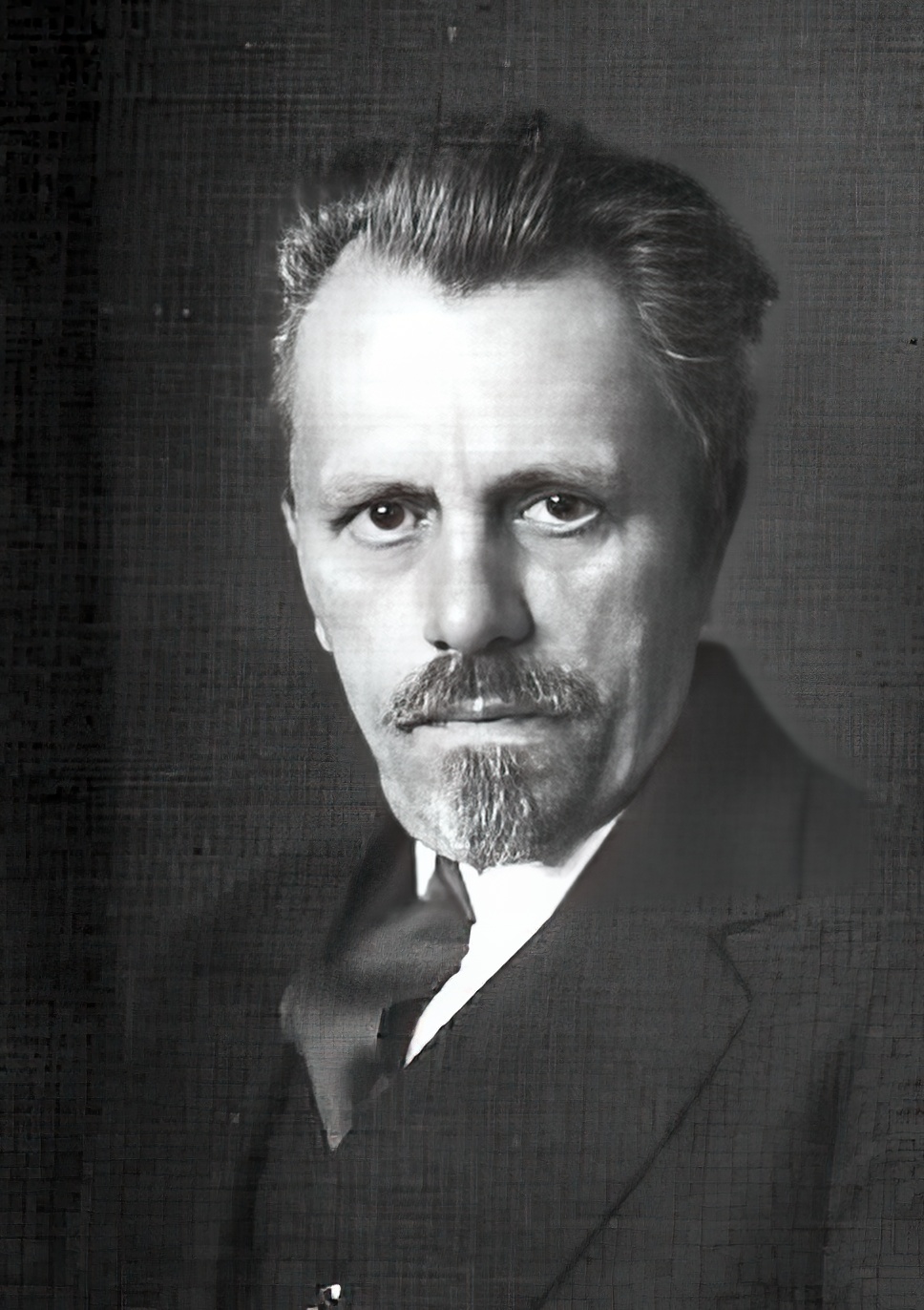
Arthur Wilhelm Otto Lewin-Funcke, originally Arthur Levin was a German sculptor and medallist. Lewin was his father's name, and Funcke his mother's maiden name.

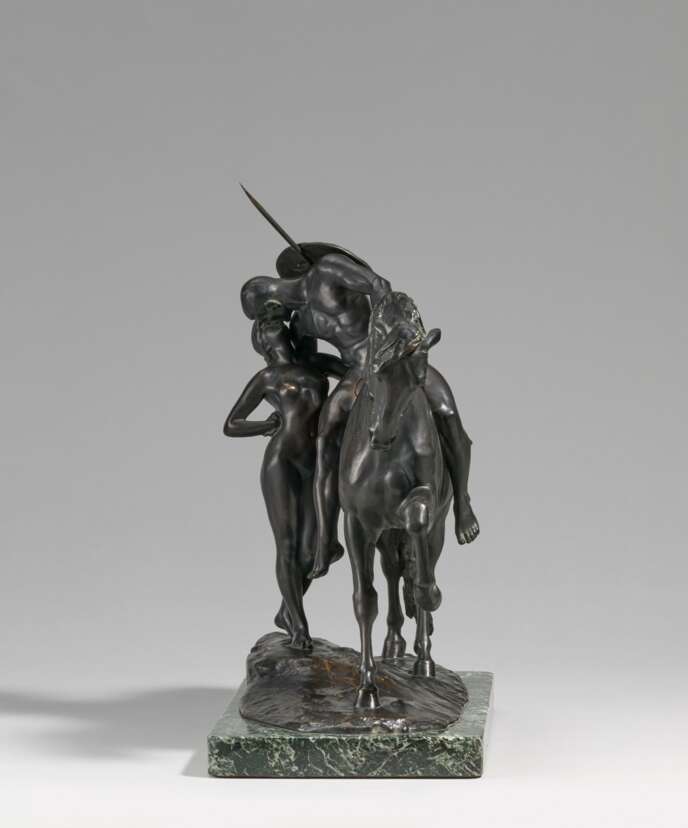

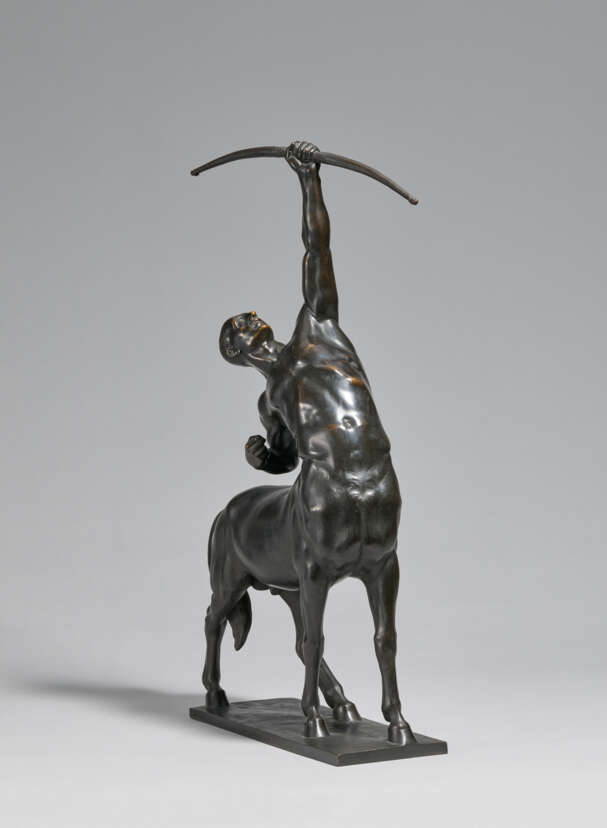


Edgar Degas, a French artist, was a master of painting, sculpture, and drawing, celebrated for his profound influence on the Impressionist movement despite his preference for being called a realist. Degas was born into a well-off family in Paris, France, and demonstrated a keen interest in art from an early age, eventually shaping his path to become one of the most sophisticated draftsmen of his time. His rigorous academic training and close study of classical art initially aimed him towards a career in history painting, but Degas soon pivoted towards contemporary subject matter, thus cementing his role as a classical painter of modern life.
Degas is renowned for his dynamic portrayals of movement, particularly in his depictions of dancers, racehorses, and everyday Parisian life. His works are characterized by their psychological depth and the isolation of his figures, showcasing his unique ability to capture the essence of his subjects with both empathy and critical distance. More than half of his oeuvre focuses on dancers, reflecting not only his fascination with the ballet but also his innovative approach to composition and form. This focus on the human figure, explored in various media including oil, pastel, and sculpture, underscores Degas's commitment to studying the nuances of human movement and expression.
Degas's artistic career is marked by his experimentation with various techniques and materials, as seen in his bronze sculptures and pastel nudes. One of his most famous sculptures, the study of the young ballet student Marie van Goethem, showcases his pioneering use of real objects in sculpture, a practice that prefigured later artistic innovations. Despite the controversies that sometimes surrounded his work, particularly in his depictions of the female nude, Degas's legacy as an artist who bridged the gap between traditional academic art and the modern movements of the early 20th century remains undisputed.
For collectors and experts in art and antiques, Degas's work offers a fascinating study in the evolution of modern art, highlighting the artist's deep engagement with the cultural and social dynamics of his time. His pieces, whether in the form of paintings, sculptures, or prints, continue to captivate audiences with their complexity, beauty, and innovative spirit.
If you are keen to stay updated on sales and auction events related to Edgar Degas, signing up for updates is a prudent choice. This subscription service ensures that you remain informed about new opportunities to acquire works by this pivotal figure in the art world, without overwhelming you with unnecessary information.


Edgar Degas, a French artist, was a master of painting, sculpture, and drawing, celebrated for his profound influence on the Impressionist movement despite his preference for being called a realist. Degas was born into a well-off family in Paris, France, and demonstrated a keen interest in art from an early age, eventually shaping his path to become one of the most sophisticated draftsmen of his time. His rigorous academic training and close study of classical art initially aimed him towards a career in history painting, but Degas soon pivoted towards contemporary subject matter, thus cementing his role as a classical painter of modern life.
Degas is renowned for his dynamic portrayals of movement, particularly in his depictions of dancers, racehorses, and everyday Parisian life. His works are characterized by their psychological depth and the isolation of his figures, showcasing his unique ability to capture the essence of his subjects with both empathy and critical distance. More than half of his oeuvre focuses on dancers, reflecting not only his fascination with the ballet but also his innovative approach to composition and form. This focus on the human figure, explored in various media including oil, pastel, and sculpture, underscores Degas's commitment to studying the nuances of human movement and expression.
Degas's artistic career is marked by his experimentation with various techniques and materials, as seen in his bronze sculptures and pastel nudes. One of his most famous sculptures, the study of the young ballet student Marie van Goethem, showcases his pioneering use of real objects in sculpture, a practice that prefigured later artistic innovations. Despite the controversies that sometimes surrounded his work, particularly in his depictions of the female nude, Degas's legacy as an artist who bridged the gap between traditional academic art and the modern movements of the early 20th century remains undisputed.
For collectors and experts in art and antiques, Degas's work offers a fascinating study in the evolution of modern art, highlighting the artist's deep engagement with the cultural and social dynamics of his time. His pieces, whether in the form of paintings, sculptures, or prints, continue to captivate audiences with their complexity, beauty, and innovative spirit.
If you are keen to stay updated on sales and auction events related to Edgar Degas, signing up for updates is a prudent choice. This subscription service ensures that you remain informed about new opportunities to acquire works by this pivotal figure in the art world, without overwhelming you with unnecessary information.
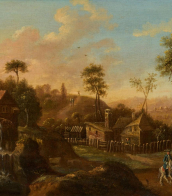
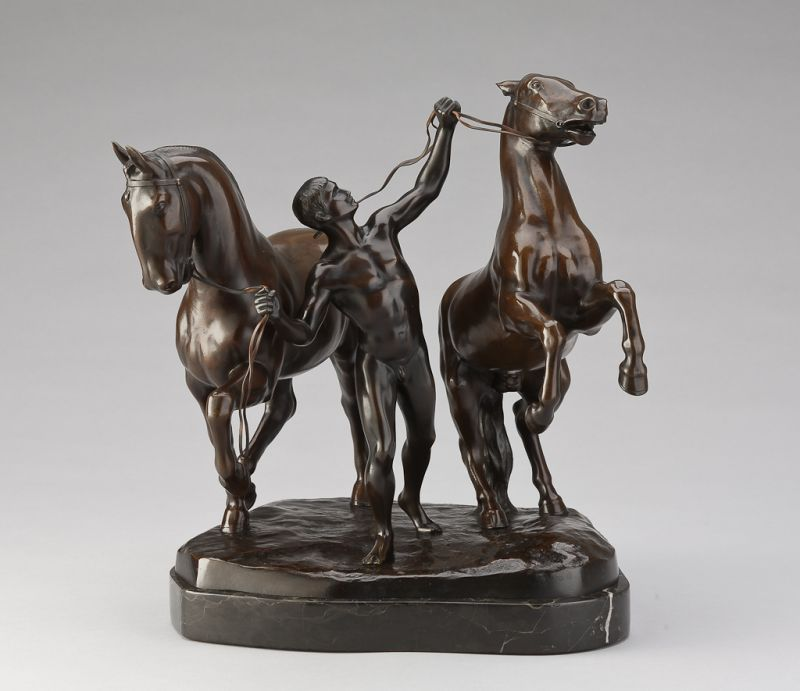
Rudolf Kaesbach was a German sculptor.
Rudolf Kaesbach studied at the academies of Hanau (drawing), Paris (foundry) and Brussels. In Düsseldorf he ran a workshop in which he cast his own models.
After 1904, Rudolf Kesbach presented a series of life-size marble figures to the public at exhibitions in Berlin, Düsseldorf and Malmö. Later he devoted himself increasingly to the depiction of nude women. Much of his work took him beyond Art Nouveau to Art Deco.
In 1939, 1940, 1941 and 1943, Kiesbach exhibited his sculptures at the Great German Art Exhibitions in Munich. These exhibitions were representative under National Socialism.

 Макс Клингер. Никола Першайд. Фотографический портрет Макса Клингера, 1913.jpg)
Max Klinger was a German painter, graphic artist and sculptor and a symbolist.

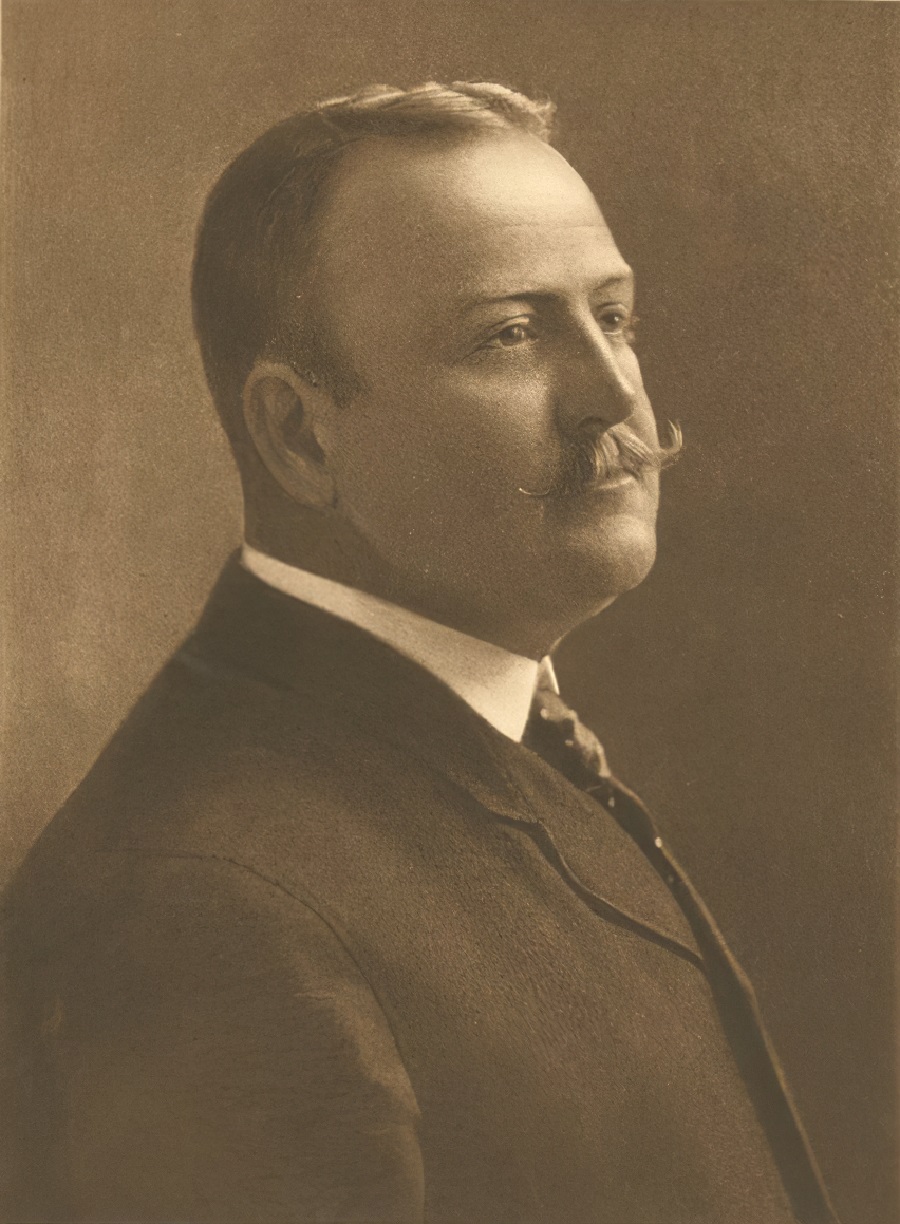
Frederic Sackrider Remington, an American artist born in 1861 in Canton, New York, is celebrated for his vivid portrayals of the American West. Specializing in painting, sculpture, and illustration, Remington captured the essence of Western life through dynamic scenes of cowboys, Native Americans, and the U.S. Cavalry, evoking a nostalgic era that was quickly vanishing by the late 19th century.
Remington's early experiences in the West, which included ventures into sheepherding and prospecting, profoundly influenced his artwork. Despite initial business failures and personal setbacks, his first-hand encounters with the rugged landscapes and frontier characters provided authentic material for his art. By the mid-1880s, Remington’s work began to gain recognition, and he quickly established himself as a significant figure in Western art, contributing illustrations to popular magazines like Harper’s Weekly.
In his later years, Remington's style evolved, displaying a notable shift towards impressionism and atmospheric mood in his "Nocturnes" series. These paintings are characterized by a dramatic use of light and shadow to convey the mystery and tension of nighttime in the West. Despite his own critical self-view, these works were highly regarded and marked a significant contribution to American art history. Remington’s art is featured in major collections, including the Metropolitan Museum of Art and the Frederic Remington Art Museum in Ogdensburg, New York, preserving his legacy as an icon of American culture.
For those interested in exploring more about Frederic Remington’s life and works, updates on exhibitions and sales can be subscribed to, keeping enthusiasts connected to new insights and offerings related to this influential artist.


Frederic Sackrider Remington, an American artist born in 1861 in Canton, New York, is celebrated for his vivid portrayals of the American West. Specializing in painting, sculpture, and illustration, Remington captured the essence of Western life through dynamic scenes of cowboys, Native Americans, and the U.S. Cavalry, evoking a nostalgic era that was quickly vanishing by the late 19th century.
Remington's early experiences in the West, which included ventures into sheepherding and prospecting, profoundly influenced his artwork. Despite initial business failures and personal setbacks, his first-hand encounters with the rugged landscapes and frontier characters provided authentic material for his art. By the mid-1880s, Remington’s work began to gain recognition, and he quickly established himself as a significant figure in Western art, contributing illustrations to popular magazines like Harper’s Weekly.
In his later years, Remington's style evolved, displaying a notable shift towards impressionism and atmospheric mood in his "Nocturnes" series. These paintings are characterized by a dramatic use of light and shadow to convey the mystery and tension of nighttime in the West. Despite his own critical self-view, these works were highly regarded and marked a significant contribution to American art history. Remington’s art is featured in major collections, including the Metropolitan Museum of Art and the Frederic Remington Art Museum in Ogdensburg, New York, preserving his legacy as an icon of American culture.
For those interested in exploring more about Frederic Remington’s life and works, updates on exhibitions and sales can be subscribed to, keeping enthusiasts connected to new insights and offerings related to this influential artist.

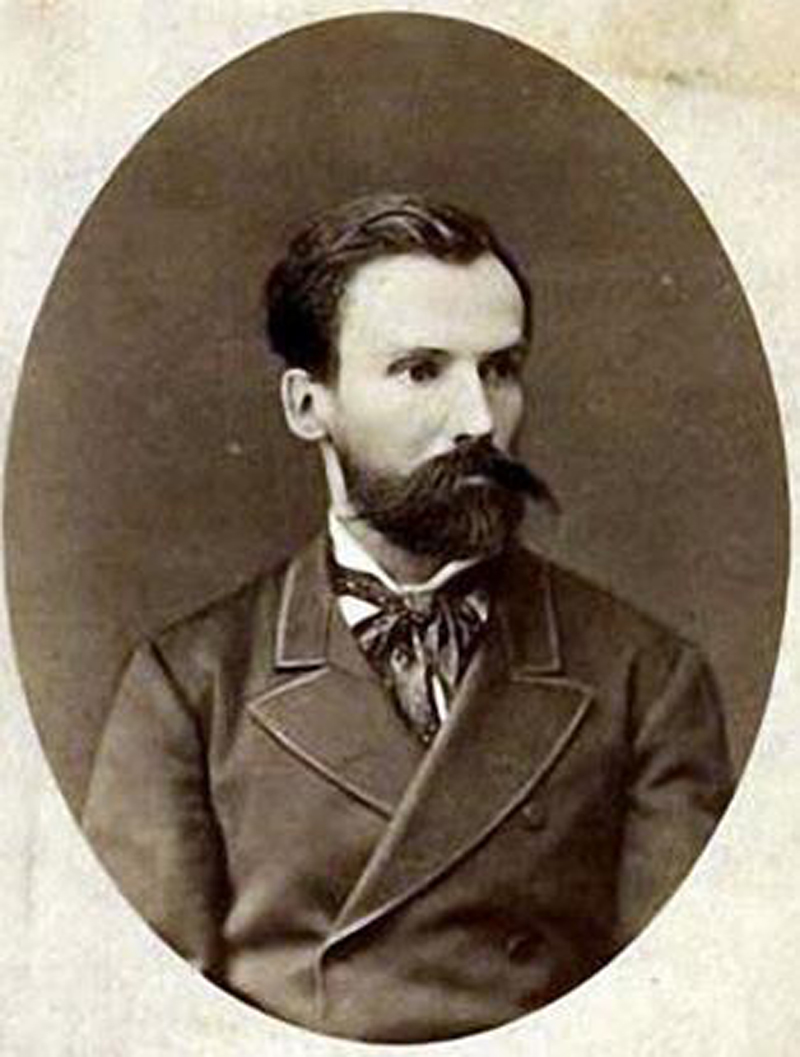
Yevgeny Alexandrovich Lanceray (Russian: Евгений Александрович Лансере) was a Russian sculptor born in 1848, renowned for his detailed bronze sculptures that often depicted historical and ethnographic themes. His works, celebrated for capturing the essence of 19th-century Russian life, include statues such as "Young Ossetian Sitting" and "Royal Falconer" which demonstrate his skill in portraying both human figures and animals with remarkable realism and emotion.
Lanceray's artistic journey began in St. Petersburg, where he was deeply influenced by his surroundings and the vibrant artistic community. He trained under the tutelage of prominent artists and developed a unique style that made substantial contributions to Russian art. His sculptures were widely appreciated for their dynamic representation of subjects and meticulous attention to detail.
Lanceray's legacy extends beyond his sculptures, as his works are featured in major galleries and are highly sought after by collectors. His dedication to art and his ability to portray Russian culture have left an indelible mark on the art world, making his pieces revered collectibles in auctions and exhibitions globally.
For collectors and experts interested in Lanceray's work, staying informed about upcoming auctions and exhibitions can be highly rewarding. To receive updates and exclusive information on Yevgeny Alexandrovich Lanceray, sign up for our newsletter, ensuring you never miss out on the opportunity to add a piece of this master sculptor’s legacy to your collection.

 Макс Клингер. Никола Першайд. Фотографический портрет Макса Клингера, 1913.jpg)
Max Klinger was a German painter, graphic artist and sculptor and a symbolist.

